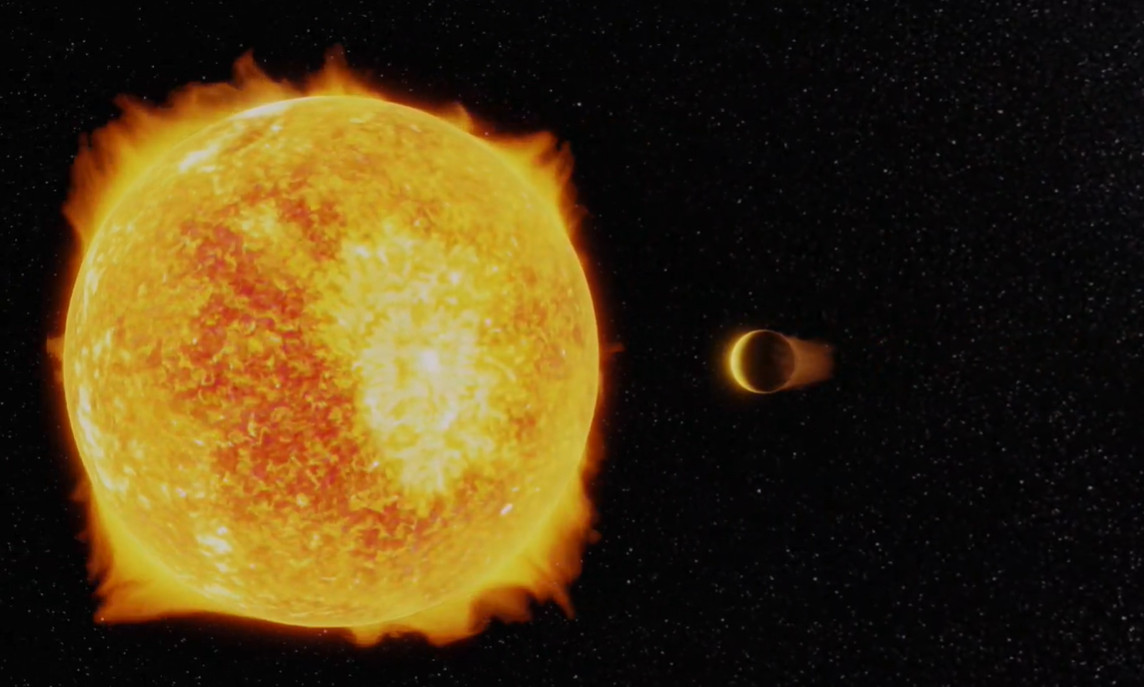

Neptune’s atmosphere, with colors contrasts modified to emphasize the planet’s atmospheric features.

Deeper clouds of water ice should be also found in the lower regions of the troposphere, where pressures of about 50 bars (5.0 MPa) and temperature of 273 K (0 ☌) are common. At the upper-level, temperatures are suitable for methane to condense, and the pressure conditions are such that clouds consisting of ammonia, ammonium sulfide, hydrogen sulfide and water can exist.Īt lower levels, clouds of ammonia and hydrogen sulfide are thought to form.

The surface layer is also permeated by roving bands of clouds with varying compositions, depending on altitude and pressure.

Neptune’s “surface” can therefore be said to be composed of about 80% hydrogen and 19% helium, with a trace amount of methane. Within the troposphere, pressure levels range from one to five bars (100 and 500 kPa), hence the surface of Neptune is defined as being within this region. The two main regions of Neptune’s atmosphere are the two innermost ones: the lower troposhere, where temperatures decrease with altitude and the stratosphere, where temperature increases with altitude. It’s atmosphere is also divided into four layers, consisting of (from innermost to outermost) the lower troposphere, the stratosphere, the thermosphere and the exosphere. Credit: NASAĪlso like Uranus, Neptune’s internal structure is differentiated between a rocky core consisting of silicates and metals a mantle consisting of water, ammonia and methane ices and an atmosphere consisting of hydrogen, helium and methane gas. The internal structure and composition of Neptune. Because Neptune’s atmospheric methane content is similar to that of Uranus, some unknown atmospheric constituent is thought to contribute to Neptune’s more intense coloring. Due to its smaller size and higher concentrations of volatiles relative to Jupiter and Saturn, Neptune (much like Uranus) is often referred to as an “ice giant” – a subclass of a giant planet.Īs with Uranus, the absorption of red light by the atmospheric methane is part of what gives Neptune its blue hue, although Neptune’s is darker and more vivid. But with a mass of 1.0243 × 10 26 kg – which is roughly 17 times that of Earth – it is the third most massive, outranking Uranus. With a mean radius of 24,622 ± 19 km, Neptune is the fourth largest planet in the Solar System. Because of this, Neptune’s surface is one of the most active and dynamic places in entire the Solar System. That being said, Neptune does have a surface of sorts, (as with the other gas and ice giants) which is defined by astronomers as being the point in the atmosphere where the pressure reaches one bar. If a person were to attempt to stand on Neptune, they would sink through the gaseous layers.Īs they descended, they would experience increased temperatures and pressures until they finally touched down on the solid core itself. What we see is actually the tops of some very deep gas clouds, which in turn give way to water and other melted ices that lie over an approximately Earth-size core made of silicate rock and a nickel-iron mix. In fact, the blue-green disc we have all seen in photographs over the years is actually a bit of an illusion. As a gas giant (or ice giant), Neptune has no solid surface.


 0 kommentar(er)
0 kommentar(er)
